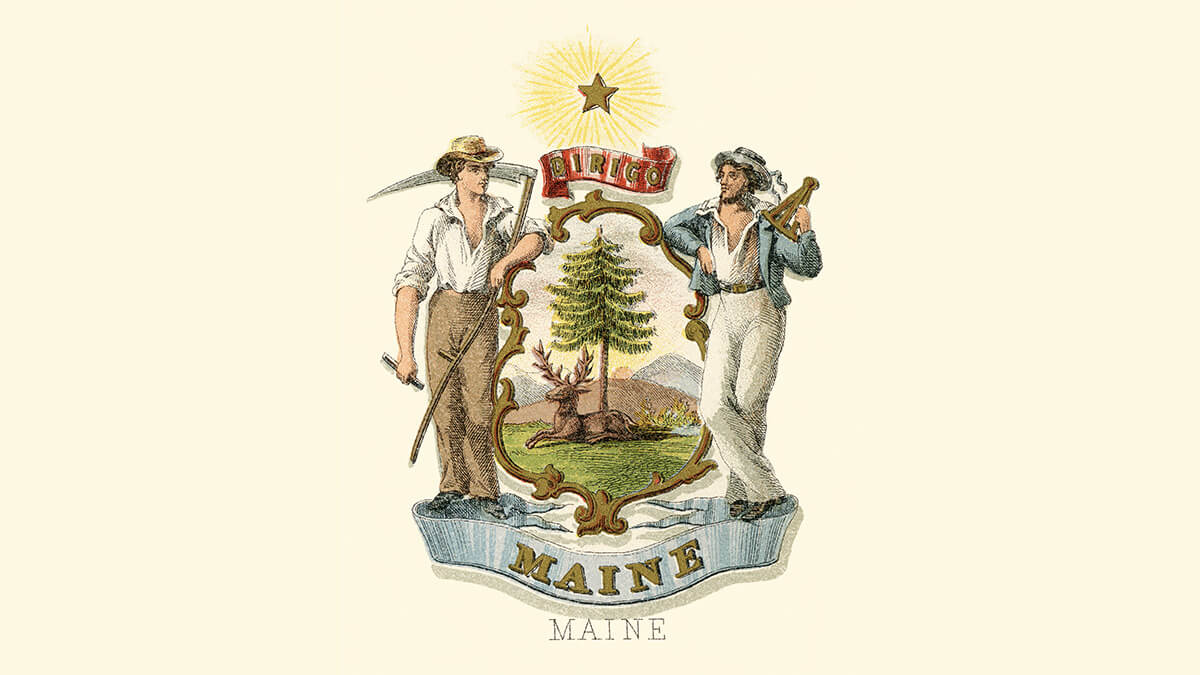Composition
The Maine flag features a field of blue charged with the state coat of arms, centered.

The Maine state flag follows a common pattern for U.S. state flags, featuring the coat of arms on a field of blue.
It wasn’t always this way, though. The first official flag was a simple and graphic design featuring a pine tree. It has proven very popular over the years and many campaigns have tried to revert the flag back to the original design with no success (yet).
The current version of the flag was adopted February 23, 1909.
The Maine flag features a field of blue charged with the state coat of arms, centered.

a guiding light, navigation, leadership
rich agricultural tradition
Maine’s long coastline, fishing, shipbuilding
New England, regional flora and fauna
The Maine coat of arms (and state seal) have remained relatively unchanged since adoption in 1820. It was formally standardized in 1919 to reduce small variations.

The Maine flag uses the same blue of the U.S. national flag.
Maine statute specifies the dimensions of the flag in feet and inches.
The flag should have a fly of 5 feet, 6 inches and a hoist of 4 feet, 4 inches.
The coat of arms should be embroidered on a flag of silk and can be trimmed with knotted yellow fringe measuring 2 1/2 inches wide.
The flag should be flown on a 9 foot pike (flagple) with a tassled cord 8 feet 6 inches in length attached to the spearhead. The cord should be made of white and blue silk strands.

The 1901 version of the Maine flag featured a green pine tree and a blue five-pointed star on a field of buff.
Two attempts in the 1990’s failed to bring back the original flag. In the last few years, though, private companies have begun manufacturing and selling a similar version resulting in increased popularity and new calls to change the flag once again.
